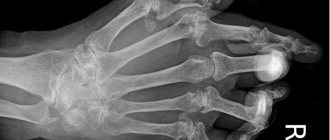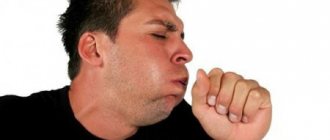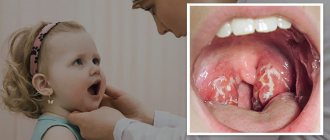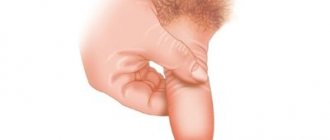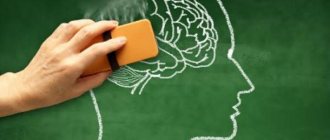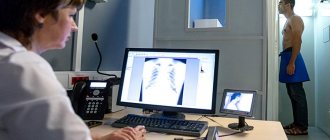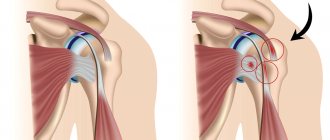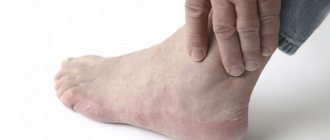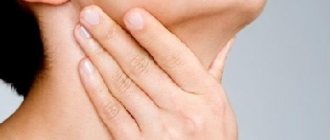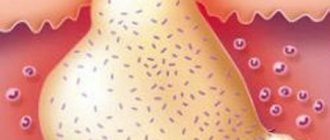Causes of coccydynia
There are many reasons that contribute to the development of coccydynia, often diagnosing them requires a lot of time and effort. The main causes of anococcygeal pain syndrome are:
- consequences of injury (bruise or fracture of the coccyx), which could have occurred long before the manifestations of coccydynia;
- bone changes in this area;
- sitting on the toilet for a long time;
- dysfunction of the neuromuscular system in the perineum and the entire pelvic floor;
- prolapse of the perineum;
- psycho-emotional stress;
- difficult labor;
- pathologies of the bone column with pronounced neurological symptoms;
- diseases of the genitourinary system;
- surgical interventions on the anus, causing deformation of the anus and scarring;
- diseases of the rectum, even if they are cured (proctitis, paraproctitis, anal fissure, hemorrhoids, sigmoiditis, etc.);
- bowel disorders (frequent constipation or diarrhea).
Prognosis and prevention
After a thorough analysis, the doctor can prescribe an effective treatment regimen. The prognosis for the development of the disease is favorable in most cases. It worsens if coccydynia is associated with injuries to the coccyx, diseases of the perineum, pelvis or spine. Here, the result of treatment depends on the severity of the damage and the stage of the pathology. To prevent the development of coccydynia, you must follow these rules:
- Lead an active lifestyle.
- Treat spinal diseases in a timely manner.
- When working sedentarily, use springy or soft chairs;
- Avoid excessive stress on the spine.
- For winter, choose shoes with stable soles to avoid falls.
Classification of coccydynia
The classification of coccydynia implies the presence of two types of this disease:
- primary coccydynia, the cause of development is direct injury to the coccyx;
- secondary coccydynia has many etiological factors (proctological, urological, gynecological pathologies, etc.).
This form includes two subtypes:
- anorectal pain (pain in the perineum, buttocks, anus and rectum);
- proctalgia (pain spreads mainly along the rectum).
Coccydynia | Who is affected by the syndrome | Why does | Symptoms | Diagnostics Treatment at Doctor Ost |
Doctor Ost MC specializes in the treatment of pathologies of the musculoskeletal system. Our specialists know how to treat coccydynia so that it does not return. Our treatment method allows you to normalize the condition in one day. Make an appointment with a neurologist right now. An online registration service is available.
Sign up
The term coccydynia is not used often. Doctors call this pain in the lowest part of the spine - in the tailbone. However, pain in the coccyx area often spreads to the rectum, perineum, and anus, causing patients a lot of inconvenience and suffering. There are many reasons for its appearance: trauma, inflammation, infection, pathology of internal organs. Wide localization of pain during coccydynia, painful but strange symptoms frighten the patient. Of course, he cannot independently diagnose coccydynia. But it’s not clear which doctor to see.
WHO IS AFFECTED BY COCCYDYNY SYNDROME
The syndrome is rare: firstly, the tailbone is less susceptible to diseases than other parts of the spine, and secondly, not everyone seeks help with a delicate problem because of false shame. According to statistics, symptoms of coccydynia are more often observed in women. This is explained by the special structure of the spine in the coccygeal region and labor.
WHY DOES COCCYDYNYIA OCCUR?
Main reasons:
- sedentary lifestyle, sedentary work;
- injuries: bruises and fractures;
- inflammation of nerves and muscles in the lumbosacral region;
- a tumor compressing the nerve and blood vessels in the sacral region;
- microtraumas that cause the development of adhesions: strands of connective tissue between organs;
- scars after injuries and operations;
- diseases of the rectum and anus;
- diseases of the genitourinary system;
- problems with bowel movements;
- Coccydynia in women appears after difficult childbirth if the tailbone has been injured;
- Ligament weakness that occurs with age.
The development of coccyx disease is promoted by stress, violation of the rest regime, poor diet, lack of calcium and magnesium.
COCCYDYNYA: SYMPTOMS
The main symptom is regular attacks of dull pain in the tailbone area.
Coccydynia manifests itself especially clearly:
- at the time of loading: when lifting weights or performing physical exercises on the lower body (legs, hips, buttocks);
- when changing from rest to activity: for example, immediately after sleep or long sitting;
- during or immediately after bowel movement;
- when pressing on the tailbone during diagnosis.
Ask a Question
The patient feels a throbbing, aching or boring pain that spreads from the tailbone and radiates to the lower back, anus, and buttocks. The severity of the manifestation varies: from discomfort to debilitating, almost constant pain. Often, the main symptoms of coccyx coccyx include pallor and increased sweating during an attack. The disease progresses progressively, and at a certain point the pain becomes unbearable.
Gait disturbances and decreased emotional background are accompanying symptoms of coccydynia, and it makes sense to start treatment immediately.
Ask a Question
DIAGNOSIS OF COCCYDYNAYA
Usually, a survey and examination by an experienced neurologist is sufficient to make a diagnosis of coccydynia. However, it is important to understand what form of coccydynia refers to. Treatment should be aimed at eliminating this cause, and not just the pain symptoms. To clarify the diagnosis, additional research may be required: laboratory tests for infections, ultrasound of the abdominal area, or transvaginal ultrasound of the pelvic organs.
Additionally, a consultation with a urologist for men and a gynecologist for women may be necessary. If the diagnosis confirms that the symptoms of vertebrogenic coccydynia, treatment will remain entirely within the competence of the Doctor Ost MC. In other cases, after rapid relief of symptoms, you will need to contact a specialized clinic for treatment of the underlying disease of the internal organs that provoked coccygesia.
PRIMARY COCCYDYNYA OF THE COCCYX: TREATMENT
The primary form is vertebrogenic. The source of pain is hidden in the tailbone itself. The patient easily recognizes pain in the spine and sacrum.
- osteochondrosis and other diseases of the spine;
- diseases of the vessels supplying the coccyx;
- bruises;
- dislocations;
- fractures.
- natural childbirth in women.
Treatment of coccydynia of the first type will be aimed at restoring blood flow, relaxing the muscles of the pelvic area, and reducing dislocations. According to the first vertebrogenic type, the symptoms of coccyx coccyx in women and treatment will coincide with the symptoms and treatment in men.
As a treatment for type 1 coccydynia, the following may be recommended:
- botulinum therapy - quickly relieves spasm;
- techniques from a chiropractor - returning the tailbone to the anatomically correct position;
- interstitial stimulation - stimulates rapid healing of the damaged nerve;
- shock wave therapy - eliminates tissue from fibrous formations, growths, deposits, improves blood flow and lymphatic drainage;
- high-intensity laser therapy - relieves pain, relieves swelling and inflammation;
- spinal traction on the DRX and Exten Trac Elite systems, they remove clamps on the nerve endings in the lumbar region.
Secondary coccydynia: treatment
This form is caused by diseases of the internal organs near the tailbone. Inflammations and infections require a special approach and treatment. Symptoms of coccydynia of the secondary form are often concentrated:
- in the anus (proctalgia);
- in the rectum, perineum, lower abdomen (anorectal syndrome).
Doctor Ost MC has a unique technology for quickly relieving pelvic pain using botulinum therapy.
Having alleviated the patient’s condition, you can begin the main treatment, depending on the root cause of the disease. However, often after the spasm is eliminated, the trophism (nutrition) of the tissues is restored, swelling and inflammation go away, and the disease of the internal organ also disappears. how much does it cost? Look for the cost of a specialist consultation in the “consultative appointment” section of our price list. Follow the promotions, don't miss out on the best price!
Symptoms of coccydynia
Anococcygeal pain syndrome combines a combination of the following symptoms:
- pain in the coccygeal region (direct coccydynia);
- anorectal pain (pain in the anus), which can be of varying duration, can appear suddenly and also disappear suddenly, occur at any time of the day and for no apparent reason. The pain can be of any nature, be sharp or dull, stabbing, cutting, cramping, throbbing or constant. Also, anorectal pain with this syndrome is characterized by irradiation to the sacrum, thigh or gluteal region.
Symptom of proctalgia
Proctalgia (pain in the rectum) is characterized by an unexpected appearance, usually at night, lasting about 15-30 minutes, after which a period of relief begins. There may be quite long intervals between such attacks. In some cases, the pain is accompanied by cramps in the intestines. Pain in the perineum in men can provoke the development of priapism (pathological persistent painful erection). Sometimes sexual intercourse provokes an attack of anorectal pain. Often the acute period of anococcygeus pain syndrome is associated with the presence of general neurovegetative symptoms - sweating and pallor of the skin.
The location of coccydynia is the coccyx area, the severity of pain increases when pressing on it or when walking. Often, determining the location of pain is quite problematic and difficult to diagnose, while patients complain of pain in the rectum, discomfort, burning sensation and heaviness in the coccyx area.
Adviсe
When treating coccydynia, rosehip decoction is used to relieve inflammation. A liter of boiling water is poured into 100 g of fruit. No boiling required. Leave for half an hour. Strain the broth and store in the dark at room temperature. Take 100 ml three times a day.
To restore diseased tissue in the tailbone area, aloe dressings are applied. The plant has reparative properties. The aloe leaf is cut from the lower part of the trunk, where it is more fleshy, and the spines are trimmed. Divide the sheet in the middle into two parts. Place on gauze or bandage. The wet side should touch the skin. Secure the compress.
Immunity plays a huge role in the recovery of the body. To strengthen it, it is recommended to consume citrus fruits rich in vitamins C, A, and E every day.
To prevent the development of osteoporosis, you need to include more fish in your diet, which is rich in phosphorus, and also consume dairy products containing calcium.
Anorectal neuralgia
With anorectal neuralgia, diffuse pain develops in the anal region, in some cases radiating to the thigh, buttocks and vagina. Such phenomena often occur in postmenopausal women and can be accompanied by various neurological and neurasthenic pathologies (neuroses, depression, hypochondria).
Often anococcygeus syndrome is neurogenic in nature. Many patients associate long-term pain with deadly pathologies; such patients often develop an obsessive fear of cancer; they require specialists to conduct a thorough and as complete examination as possible, as well as surgical treatment.
Rehabilitation treatment and rehabilitation in children
Coccydynia develops rarely in children and is predominantly traumatic in nature. If the child does not receive appropriate treatment in time, the symptoms of the pathology may remain with him for life. Moreover, they lead to dysfunction of the pelvic and perineal organs.
Rehabilitation therapy in children consists, first of all, in timely treatment of the injury, which should be done by a qualified traumatologist.
During the rehabilitation period, the child needs to do therapeutic exercises and lead an active lifestyle. Swimming lessons are recommended. Long periods of sitting, cycling, running, and jumping should be avoided. Important! Properly equip the child's sleeping and working space, where the load on the tailbone will be minimized. Depending on the severity of the injury, recovery may take from 1 to 6 months.
Diagnosis of coccydynia
The diagnosis of this disease is established on the basis of anamnesis, examination of the patient and a series of laboratory and instrumental studies. In order to exclude other pathologies, differential diagnosis is carried out; pathologies with similar manifestations include:
- haemorrhoids;
- anal fissure;
- sciatica (inflammation of the sciatic nerve);
- lumbosacral radiculitis;
- paraproctitis.
Only after excluding these pathologies and performing other studies can the doctor make a diagnosis of anococcygeus pain syndrome. The patient examination package includes:
- general examination;
- digital examination of the rectum;
- sigmoidoscopy;
- anoscopy;
- ultrasound examination of the abdominal organs;
- irrigography.
Patients also undergo blood sampling for clinical analysis. Women are advised to undergo a mandatory gynecological examination, because the cause of pain may be hidden precisely in pathologies of the female reproductive system, especially for women who have experienced a difficult birth.
Ultrasonography
Ultrasound examination of the abdominal cavity makes it possible to diagnose the condition of organs, to exclude concomitant pathologies, and also to evaluate intestinal motility.
To diagnose this disease, other specialists are often involved - a urologist, gynecologist, andrologist. If no other diseases can be identified, and a symptom complex exists, the doctor can make a diagnosis - anococcygeus pain syndrome. Particular attention is paid to the psycho-emotional state of the patient, because there is a high probability that the cause of anococcygeus pain syndrome is a mental imbalance.
Complications and consequences of coccydynia
The main complication of coccydynia is considered to be osteochondrosis of the coccyx.
The main possible complications of the disease are the development of the so-called osteochondrosis of the coccyx, which, in fact, can only be eliminated by removing part of the joint.
This is no longer the elimination of the disease, but the fight against the symptom, which is a consequence of coccydynia.
In the future, this can dramatically worsen the mobility of the entire hip joint.
However, if the operation is performed at an early stage of the disease, then almost all negative consequences will not occur.
But refusal to undergo surgical treatment of a disease entails the development of chronic pain syndrome and a whole series of psychological disorders, since the disease and the feeling of constant discomfort radically undermine the emotional state of the patient.
Treatment of coccydynia
The basis for the success of treatment of coccydynia, like many other diseases, is competent diagnosis and the correctness of the diagnosis. The set of measures for the treatment of anococcygeus pain syndrome includes the use of etiological therapy (elimination of the factor that provoked the syndrome), pathogenetic treatment (elimination of the mechanisms of development of the pathology) and symptomatic therapy (elimination of pain and discomfort).
Treatment tactics for coccydynia include the use of physiotherapeutic methods, such as UHF, ultrasound, low-frequency laser therapy, x-ray therapy, mud therapy, and dynamic current.
To eliminate pain, microenemas, suppositories, neuroblockades and anti-inflammatory drugs are used locally. Massage makes it possible to relieve muscle spasms. In some cases, treatment by a psychiatrist is necessary.
Treatment of anococcygeus pain syndrome
The key to successful therapy is a comprehensive examination, the results of which will reliably indicate the cause of the pain. An accurate diagnosis is the path to solving the problem of coccydynia.
Help: treating pain in the coccyx is a very difficult, even sometimes impossible, task.
It is necessary to treat the pathology in three directions: to relieve the patient of pain, eliminate its cause and prevent existing risk factors for the further development of the pathology. Complex therapy includes several techniques:
- medications;
- physical therapy;
- exercise therapy;
- folk methods.
The main goal is pain relief. Analgesics (Apizon, Armadol, drugs based on metamizole sodium - Pentalgin, Baralgin, etc.), non-steroidal anti-inflammatory drugs (NSAIDs) - derivatives of Diclofenac, Indomethacin, Ibuprofen and Ketoprofen are used against pain. They can be prescribed in the form of tablets or intramuscular injections (for severe pain).
If tablets and injections do not help, they do therapeutic blockades with Novocaine and alcohol. Thanks to Novocaine, injections are painless, and alcohol relieves pain by affecting the nerve roots. The effect of this procedure lasts quite a long time. In addition to Novocaine, hormonal agents Kenalog and Hydrocortisone, which have anti-inflammatory properties, can be used.
Since in many cases coccydynia is provoked or intensified by moral feelings, the placebo effect gives good results.
Your doctor may also prescribe other medications:
- muscle relaxants to relax muscles in order to relieve spasms and thereby “release” pinched nerve endings. The most famous and effective are Mydocalm, Tizanidine, Baclofen, Sirdalud and Baklosan;
- antibiotics are used to treat infectious diseases; the choice of drug is made after identifying the pathogen and its sensitivity to antibacterial substances;
- chondroprotectors restore the cartilage tissue of the intervertebral discs if the cause of coccydynia is osteochondrosis and its consequences - hernias and protrusions. Frequently prescribed drugs are Structum, Dona, Artra and Teraflex;
- Laxative medications are necessary for patients suffering from constipation. As a rule, they are used in the form of suppositories - Microlax, Ferropax, Bisacodyl, etc.;
- immunomodulators to increase the body's defenses and stimulate the regeneration of damaged tissues - Imudon, Timalin, Myelopid;
- vitamin supplements containing B vitamins - Neurobion, Milgamma, Neuromultivit, Neurovitan;
- sedatives are prescribed taking into account the patient's condition. For some, tincture of motherwort and valerian is enough, while others require stronger medications - for example, Amitriptyline.
Physiotherapy
Physiotherapy helps to quickly cope with pain and inflammation. Such techniques as medical laser, darsonvalization, UHF, mud applications and therapeutic baths have proven themselves well.
Treatment of coccydynia in women and men can be supplemented with suppositories and microenemas with painkillers and anti-inflammatory drugs. To eliminate muscle spasms of the perineum and pelvic floor, local massage is performed.
It is worth noting that the placebo effect gives good results, especially in the case of pain of psychogenic origin. Psychotherapy helps with anxiety, neuroses and depression, sometimes in combination with tranquilizers and antipsychotics.
Exercise therapy
The complex of therapeutic measures necessarily includes therapeutic exercises. Performing special exercises is aimed at strengthening the muscular-ligamentous apparatus of the pelvic region, improving metabolic processes and increasing immunity.
“Bicycle” is one of the simplest but most effective exercises that helps strengthen the abdominal muscles, back and buttocks.
For pain in the tailbone, it is recommended to do the following exercises:
- from a standing position, raise your arms up and at the same time move one leg back, arching your back. Return to the starting position (IP) and change legs;
- IP - standing, hands on the belt. Rotate your body first in one direction, then in the other direction with a small amplitude. When performing the exercise, the pelvis should remain in place;
- IP - as in the previous exercise. Bend one leg at the knee and lift it, pressing the knee to the stomach. Stay in this position for 2-3 seconds, then change legs;
- lie on your back and, helping yourself with your hands, lift your legs and pelvis vertically up, leaving only your shoulder blades, shoulders and the back of your head on the floor (exercise “birch tree”);
- lying on your back, bend your knees and place a rubber ball or small fitball between them. Press the ball with your knees for 8-10 seconds, then relax your legs;
- IP - the same, but with straightened legs. Hold the ball with your feet and squeeze it with force for several seconds;
- lying on your back, raise your legs and try to bring them behind the back of your head. If possible, touch your feet to the floor behind your head. Then slowly return to the starting position;
- bike. Lying on your back, spin imaginary pedals with your feet, raising your legs slightly above the floor.
Surgery
The most common reason for surgery is injuries to the coccyx. If the apex of the coccyx is partially or completely torn off, it is resected or fixed to the sacral bone. During the procedure, spasmed muscles and ligaments are cut, leaving them without support. After such an operation, spasms, and, consequently, pain completely disappear.
Indications for surgical intervention may also be a coccyx cyst (epithelial coccygeal duct), tumor formations and diseases of the rectum - proctitis, paraproctitis and hemorrhoids.
During the rehabilitation period, antibacterial therapy is carried out to prevent possible infection, and daily dressings are performed. If you have constipation, it is recommended to adjust your diet.
Treatment of coccydynia at home
Therapy with herbs and homemade products can be a good help in the fight against pain and will have a general strengthening effect. However, it should only be used in combination with traditional methods and with the approval of the attending physician.
For severe pain, you can prepare a lavender tincture with oil. Mix vegetable oil with lavender in a ratio of 5:1 and leave for 1.5 months. Then strain the tincture and rub it on the sore spot.
Lavender has a calming, anti-inflammatory, analgesic, and antiseptic effect, thereby helping to reduce pain and restore mental balance.
The tincture of sprouted potato sprouts is prepared faster and is kept in a dark place for only 10 days. You need to separate the sprouted potato sprouts, rinse and put them in a glass container, pouring alcohol or vodka in a ratio of 1:2. Infuse the product in a lidded jar. Apply to the tailbone area every day.
The following remedy can be taken orally or used externally. Combine fresh radish juice with honey and vodka in a ratio of 4:2:1, mix well and leave for a day. For pain, take 10 grams of the drink orally once a day or rub the tailbone with it.
Analgesic methods
Today, in medical practice, special attention is paid to the elimination of pain. Different countries practice the organization of diverse institutions, the main task of which is the treatment of pain, including pain of unknown origin. As a rule, it is preferable to eliminate pain without the use of narcotics: local anesthetics, blockade of nerve fibers with novocaine, peloid therapy (hot mud applications) are used. Cortisone blockades, which were widely used in the past, are practically not used today, since they have lower effectiveness and are poorly tolerated by patients.
Prognosis for coccydynia
Anococcygeal pain syndrome is very difficult to cure, since it is quite difficult to determine the etiological factors influencing its development, and it often has a pronounced psychopathological component. But still, with an integrated approach, correct and thorough examination of the patient, it is possible to select appropriate treatment tactics and free the patient from this disease.
Anococcygeal pain syndrome is not associated with fatal pathologies of the pelvic organs, spinal bones and perineum; it also does not lead to the development of somatic complications and cannot cause death. But still, coccydynia causes great discomfort and worsens the patient’s quality of life, so it cannot be ignored; patients need to be patient, undergo a full examination and follow all the recommendations of the attending physician.
Features of therapy
Treatment of coccydynia usually does not require serious measures, but it may take more than one month. Surgical intervention is used only in severe cases of the patient’s condition, which cannot be controlled using medication.
If there are no risks and the patient is feeling well, the following methods of dealing with the problem are used:
Use of medications
For coccydynia, medications from the following groups are used: Non-steroidal analgesics (they help eliminate pain and relieve inflammation). Muscle relaxants (help eliminate muscle spasms). Psychotropic drugs (necessary if there are problems with the patient’s emotional state). Anesthetics (they are supposed to be injected into those areas where the pain is felt most strongly). Antiseptics , antimycotic, antibacterial agents (in cases where coccydynia was provoked by diseases of the pelvic organs).
The choice of medications is made by the attending physician on an individual basis. It is not advisable to use medications on your own.
Physiotherapy
With its help, it is possible to overcome inflammation in the damaged area, reduce pain and stimulate blood circulation. The following procedures are used for this:
- dynamic currents;
- paraffin applications;
- mud therapy;
- darsonvalization;
- ultrasound;
- laser therapy.
Mud therapy
ethnoscience
It involves the use of medicinal plants. Thanks to their effects, you can get rid of pathological symptoms and strengthen the body. But before starting such treatment, it is necessary to make sure that it is appropriate and that there are no contraindications. The most effective remedies for this disorder are:
- wheat germ;
- vinegar and honey;
- narrow-leaved lavender and sunflower oil (solution for external application);
- dog-rose fruit;
- young potato sprouts (an infusion for external use is prepared from them).
Physiotherapy
Thanks to it, the blood supply to the damaged area increases and the pain syndrome weakens. The attending physician should prescribe exercise therapy. Sometimes this disease can be accompanied by fractures or damage to the ligaments, which can cause stress to be harmful. The main set of exercises includes:
- squeezing the ball between the knees or feet while lying down;
- raising the pelvis (lying position, legs bent at the knees);
- pulling your knees to your chest (you also need to lie down);
- raising your arms and legs while lying on your stomach;
- throwing your legs over your head.
The patient should monitor his well-being during the exercises. Pain or discomfort requires stopping activities. If this disease is not cured, despite all the measures taken, surgery may be necessary. It is also recommended for pathological mobility of the coccyx. Surgical assistance consists of removing the damaged area.
Treatment at home is also allowed. At home, the patient can perform gymnastics and take medications. But before that, he must consult a doctor. Most often, tablets and ointments for external treatment are used for such treatment. The patient can also use suppositories - rectal or vaginal, if their use is appropriate.
However, treatment for coccydynia at home can only be done with the permission of a doctor. Reviews about this disease indicate the need to use the services of a qualified specialist. Self-diagnosis and self-medication can worsen the situation and cause complications. Therefore, if you have disturbing symptoms, you need to go to the clinic for examination.
